Letter recognition objectives are a paramount component of any robust preschool literacy curriculum, forming the bedrock upon which early language development is built. These objectives encompass crucial skills such as visual discrimination, letter naming, letter formation, and letter sound correspondence.
By mastering these foundational skills, preschoolers unlock a world of literacy, paving their way for successful decoding and word formation. In preschool education, the importance of setting clear and attainable letter recognition goals cannot be overstated – they are the first step to efficient and effective letter recognition instruction.
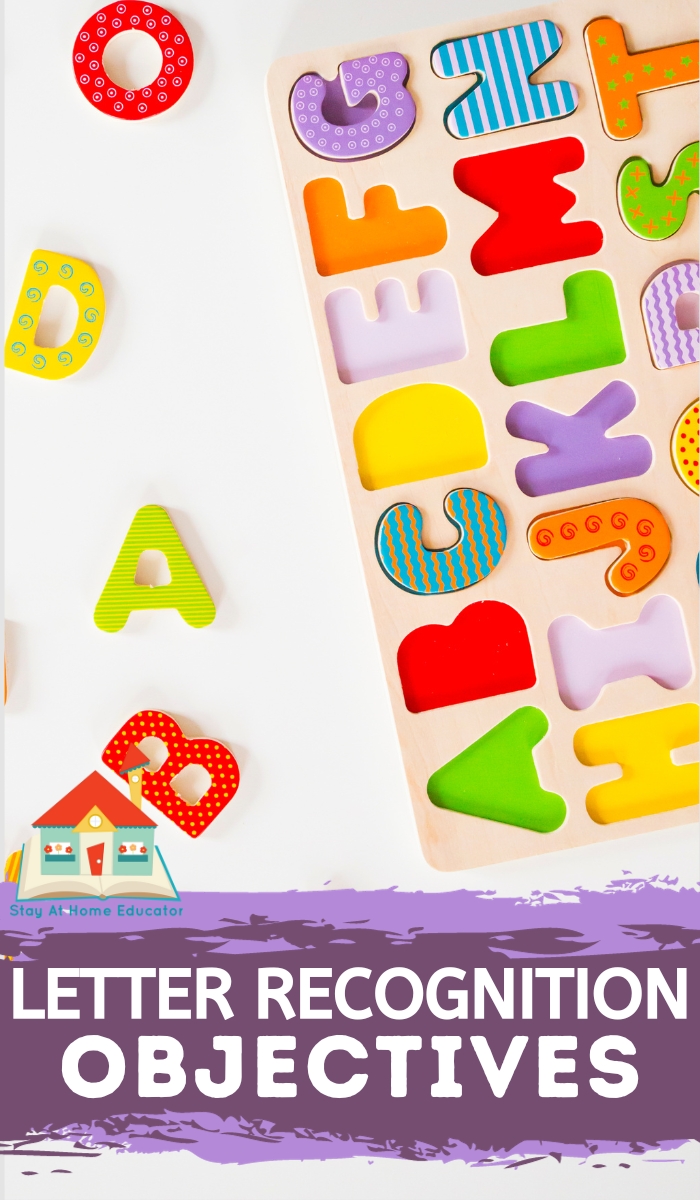
In preschool education, letter recognition objectives hold a place of prime importance. They are integral to any comprehensive preschool literacy lesson plans and serve as the cornerstone for budding language skills in young learners.
These objectives cover essential skills – visual discrimination, letter naming, letter formation, and letter sound correspondence – all of which play a vital role in shaping a child’s early literacy development.
Mastery of these skills lays the groundwork for ease in learning how to read. The significance of setting precise and achievable letter recognition goals is indeed immense.
Not only do these goals provide a clear path for teaching, but they also offer guidance for when a child struggles to learn letter recognition.
-
Product on sale
 * Daily Lessons in Preschool Literacy CurriculumOriginal price was: $135.00.$99.00Current price is: $99.00.
* Daily Lessons in Preschool Literacy CurriculumOriginal price was: $135.00.$99.00Current price is: $99.00.
What is Letter Recognition?
Letter recognition is essentially about pinpointing and differentiating the various letters in our alphabet. It’s a critical stepping stone to reading and writing, laying the groundwork for recognizing words and understanding their meaning.
In simpler terms, letter recognition is about seeing the unique shapes and designs of each letter and linking them to their sounds. It’s like getting to know the individual personalities in a cast of characters, each with its own distinctive look and sound!
Letter Recognition Definition
If you’re looking to take a deep dive into the intricacies of letter recognition, letter identification, or alphabet recognition, then read the following articles.
- Letter Recognition – Why Teach the ABCs
- Understanding the Importance of Letter Recognition
- How to Teach Letter Recognition to Preschoolers
Alphabet Recognition – What is it?
Alphabet recognition is the ability to identify, differentiate, and understand all the letters in the alphabet, both in their uppercase and lowercase forms. It involves associating each letter with its name or sound, which then allows individuals to decode words and communicate effectively.
The difference between letter recognition and alphabet recognition lies in the context – while a letter is identified in isolation, alphabet recognition requires sequencing skills and a good working memory.
Mastering alphabet recognition enhances an individual’s ability to interact with written language. It enables quick identification and decoding of letters in words and sentences, serving as a springboard for more advanced literacy skills like phonics, spelling, and reading comprehension.
Alphabet recognition is often fostered through various engaging activities. These can range from games, puzzles, and songs to flashcards and other interactive techniques that help children visually and audibly internalize the alphabet. Check out this post about Strategies for Teaching Alphabet Recognition.
Letter Recognition Skills
Understanding letter recognition skills is fundamental when crafting lesson plans or Individualized Education Program (IEP) goals. By gaining a deep understanding of these four components, educators can set clear, precise, and achievable letter recognition objectives.
This will not only enhance the effectiveness of their lesson plans but also ensure that IEP goals are tailored to foster each student’s literacy growth, paving the way for successful reading and writing proficiency.
- Visual Discrimination
- This involves the ability to differentiate one letter from another. It’s a crucial skill in recognizing letters regardless of their font or size.
- For example, a child with good visual discrimination skills can distinguish between similar-looking letters like ‘b’ and ‘d’ or ‘f’ and ‘t’.
- Letter Naming
- This refers to the ability to correctly identify a letter by its name.
- For instance, when shown the letter ‘A’, a child should be able to say its name, “A”.
- This post by Shanahan Literacy describes its importance: Should We Teach Letter Names?
- Letter Formation
- This encompasses the skill to accurately write or draw each letter. It’s about understanding how each letter is formed.
- For example, a child can form the letter ‘S’ by starting at the top, curving down to the right, looping back towards the left, and then curving down again to the right.
- Letter-Sound Correspondence
- This is about associating each written letter with its corresponding phonetic sound.
- For example, a child should know that the letter ‘M’ corresponds to the sound /m/.
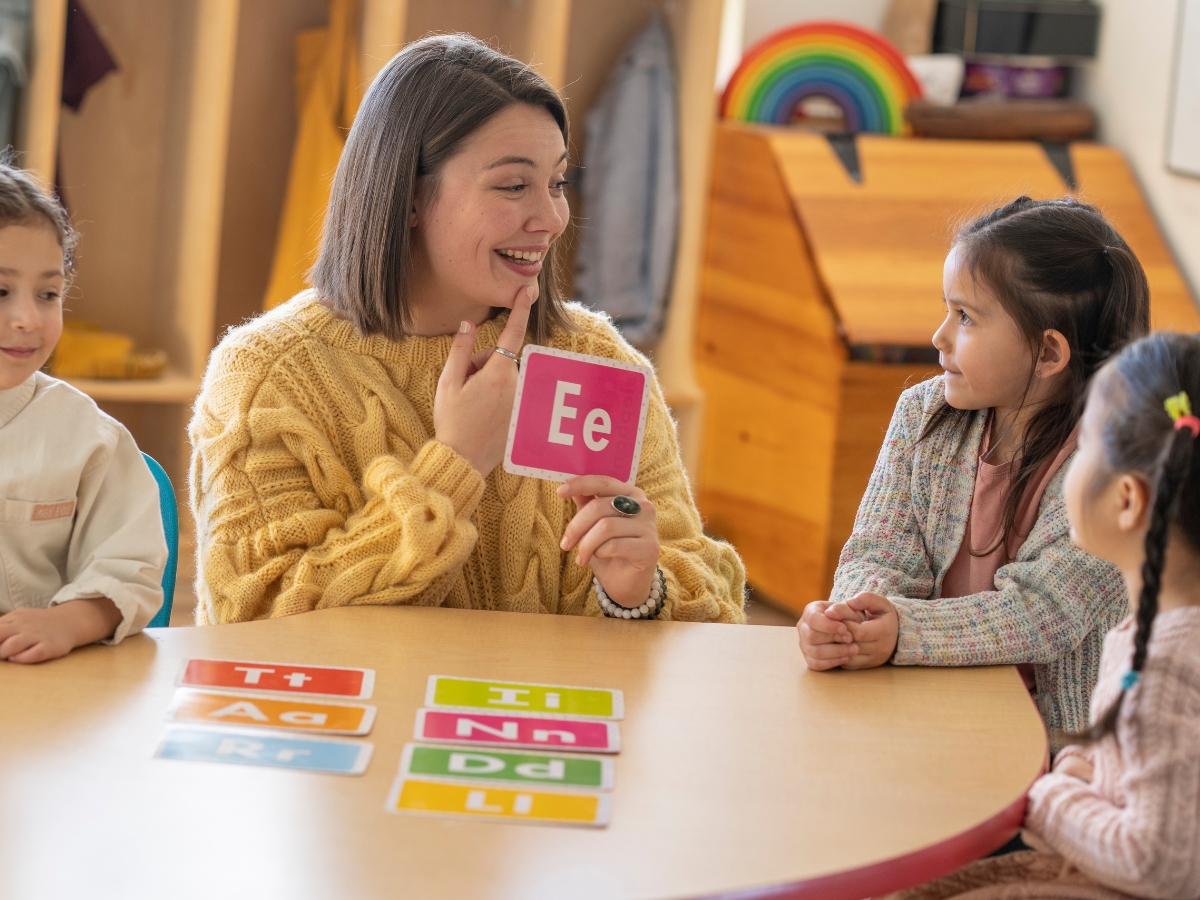
The four components of letter recognition, which include visual discrimination, letter naming, letter formation, and letter-sound correspondence, collectively contribute to a thorough comprehension of letters and their significance in language and literacy.
These skills should be central to any robust preschool literacy curriculum.
-
Product on sale
 * Daily Lessons in Preschool Literacy CurriculumOriginal price was: $135.00.$99.00Current price is: $99.00.
* Daily Lessons in Preschool Literacy CurriculumOriginal price was: $135.00.$99.00Current price is: $99.00.
This post may contain affiliate links, which means that at no cost to you, I may earn a small sum if you click through and make a purchase.
Learning Objectives Letter Recognition
Letter recognition objectives should be strategically designed to target and enhance letter recognition skills.
This approach ensures that learning experiences are focused, purposeful, and effective in strengthening the foundational literacy skills of individuals.
The goals set in the lesson plan or IEP should address each of the four components of letter recognition – visual discrimination, letter naming, letter formation, and letter-sound correspondence.
Here are some simple activity examples for each skill:
Visual Discrimination
- Letter Sorting
- Provide a variety of letters and ask the child to sort them into separate piles by letter. This will help them distinguish one letter from another.
- Try this printable upper and lower case letter sorting activity.
- Letter Matching
- Show the child a letter and ask them to find the same letter among a group of different ones. This reinforces their ability to recognize letters in different contexts.
- Here is a printable letter matching activity.
- Find the Odd One Out
- Give the child a group of similar-looking letters with one that is different and ask them to identify the odd one out. This strengthens their ability to discern subtle differences.
- Here are some printable visual discrimination cards.
Letter Naming
- Alphabet Bingo
- Make bingo cards with various letters, and call out the names. The child will locate and mark the called letter on their card, improving their letter naming skills.
- Here is a big list of letter recognition games.
- Alphabet Flashcards
- Use flashcards with different letters and have the child name each one as it is shown.
- Alphabet Puzzle
- Provide an alphabet puzzle and ask the child to say the name of each letter as they place it in the correct spot.
- Try these printable alphabet puzzles!
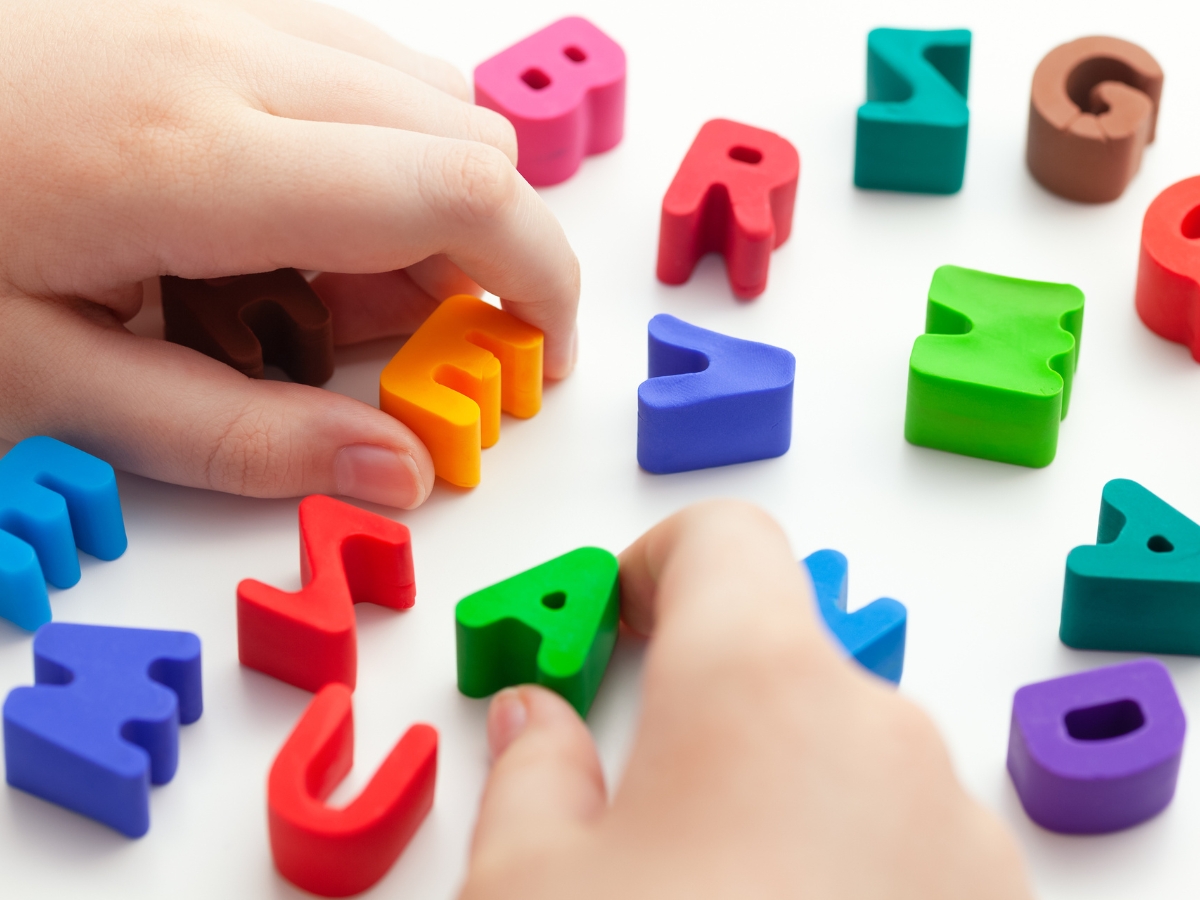
Letter Writing
- Sandpaper Letters
- Allow the child to trace over sandpaper letters. This tactile activity can reinforce the correct way to form each letter.
- Letter Writing Worksheets
- Have the child practice writing letters using fun and interactive worksheets, emphasizing the correct formation of each one.
- Here is a big list of letter formation worksheets.
- Alphabet Art
- Encourage the child to paint letters using their fingers, which can make letter formation a fun and creative experience.
- Check out this mess-free alphabet painting activity.
Letter Sound Correspondence
- Sound Matching Game
- Present the child with a range of objects and ask them to match each object to the letter that represents its initial sound. This can enhance their understanding of letter-sound relationships.
- Phonics Songs
- Teach the child a song that pairs each letter with its sound.
- The Daily Lessons in Phonics Curriculum include a phonics song for each letter of the alphabet.
- Letter-Sound Mats
- Use letter sounds correspondence mats that pair a letter and a picture of an object starting with that letter’s sound. Have the child say the letter and its sound when they see each card.
- Get printable letter-sound correspondence mats here.
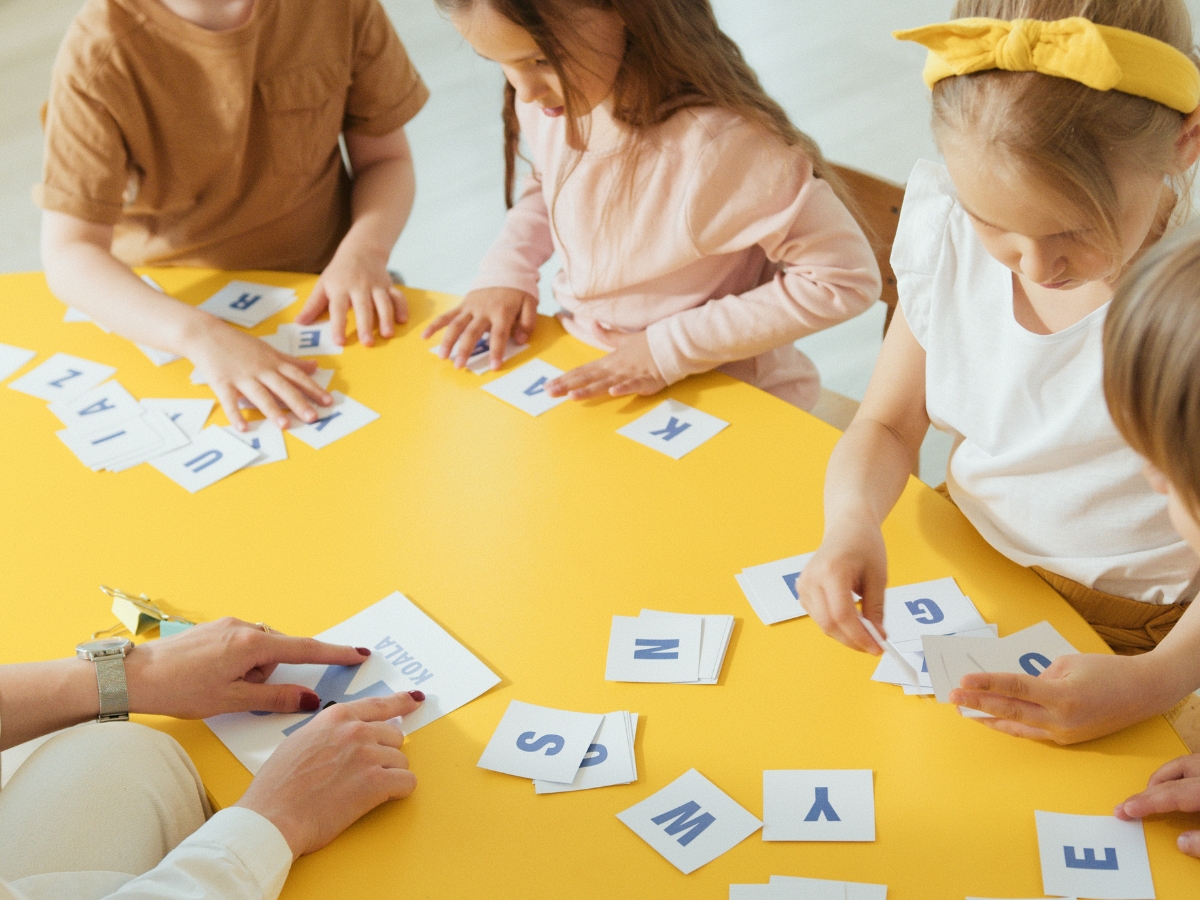
How to Teach Letter Recognition to Preschoolers
Teaching letter recognition to preschoolers is a critical step in developing early literacy skills. The process should be engaging and interactive, with the aim to make learning fun.
Preschool literacy lesson plans should be developmentally appropriate and comprehensive, encompassing a variety of activities that cater to different learning styles. They should also be systematic and explicit in their skill instruction.
Activities should also encourage both independent exploration and guided learning, promoting cognitive development and critical thinking skills. These are all included in the Daily Lessons in Preschool Literacy Curriculum.
-
Product on sale
 * Daily Lessons in Preschool Literacy CurriculumOriginal price was: $135.00.$99.00Current price is: $99.00.
* Daily Lessons in Preschool Literacy CurriculumOriginal price was: $135.00.$99.00Current price is: $99.00.
Daily Lessons in Preschool Literacy Curriculum
Our daily lessons are designed to streamline the process of teaching preschool literacy. When you have access to these year-long lesson plans, which follow a systematic sequence of skill progression, every literacy lesson you instruct builds upon what has been previously taught. This approach ensures that students feel successful and confident each day.
Here’s a snapshot of what’s included:
- 40 weeks of daily oral language lesson plans,
- 40 weeks of daily phonological awareness lesson plans, and
- 40 weeks of daily phonics lesson plans.
- These three components form the cornerstone of preschool literacy education.
These three components form the cornerstone of preschool literacy education. They are early indicators of a student’s trajectory towards becoming successful and confident readers. Rest assured, these lesson plans only incorporate tried-and-true techniques and teaching strategies.
As a bonus, we’re offering supporting pre-reading printable centers for the entire year.
Our curriculum stands out as the most engaging, comprehensive, and least preparation-intensive preschool literacy curriculum available on the market. It’s our commitment to providing quality education while making your role as an educator more efficient and effective.
-
Product on sale
 * Daily Lessons in Preschool Literacy CurriculumOriginal price was: $135.00.$99.00Current price is: $99.00.
* Daily Lessons in Preschool Literacy CurriculumOriginal price was: $135.00.$99.00Current price is: $99.00.

I’m Sarah, an educator turned stay-at-home-mama of five! I’m the owner and creator of Stay At Home Educator, a website about intentional teaching and purposeful learning in the early childhood years. I’ve taught a range of levels, from preschool to college and a little bit of everything in between. Right now my focus is teaching my children and running a preschool from my home. Credentials include: Bachelors in Art, Masters in Curriculum and Instruction.

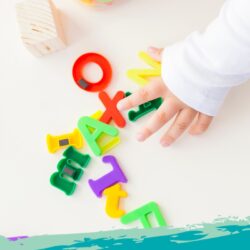
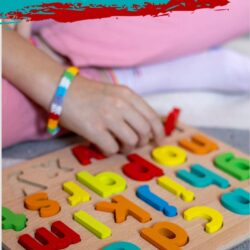
Leave a Reply